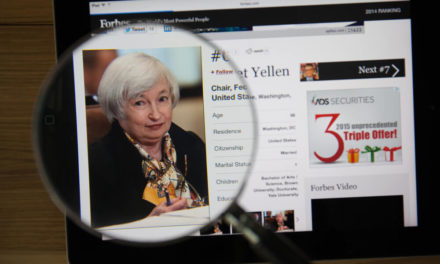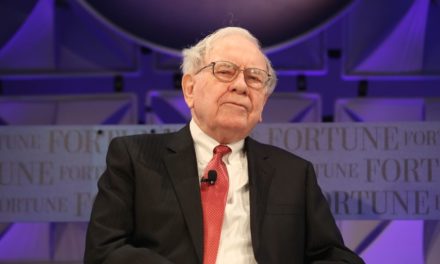U.S. economic growth slowed sharply in the fourth quarter last year to an annual rate of just 2.2 percent. There are concerns that growth has slowed even more in the first quarter this year as global weakness, fading government stimulus and rising trade tensions take a toll on the economy.
The increase in the GDP, the economy’s total output of goods and services, was revised down from an initial estimate of 2.6 percent growth in the fourth quarter, the Commerce Department reported Thursday. The change reflected weakness in a number of areas. Consumer spending, business investment, government spending and housing all came in lower than first thought.
Economists believe growth has slowed further in the current January-March quarter to around a 1.5 percent rate.
The downward revision to the fourth quarter did not affect the annual growth rate for all of 2018, which remained at 2.9 percent, the best showing since a similar increase in 2015.
President Donald Trump and other administration officials highlighted last year’s GDP performance as evidence that the administration’s policies of tax cuts, deregulation and tougher trade enforcement were working.
The president’s new budget, released earlier this month, is projecting that the economy will grow at rates of 3 percent or better through much of the next decade. This forecast is well above the estimates of most private economists who believe that growth will revert to the modest pace seen throughout this expansion of around 2 percent.
This has been the weakest economic recovery in the post-World War II period. But the expansion is set to become the longest in U.S. history if it goes past June, surpassing the 10-year expansion of 1991 to 2001.
Economists say slow growth in the labor force, reflecting low birth rates and the retirement of baby boomers, along with weak productivity gains are the major reasons GDP growth will not be able to sustain annual gains of 3 percent or better. However, this assessment is disputed by Trump and his economic advisers who believe the administration’s policies will power growth to higher levels.
In a separate report Thursday, the government said that applications for unemployment benefits, a reflection of layoffs, fell by 5,000 last week to a seasonally adjusted 211,000. The result suggests that businesses are keeping their workers in a tight job market.
The economy’s 2.2 percent annual growth rate last quarter, though solid, was the slowest since a similar 2.2 percent pace in the first quarter of 2018. That was followed by two strong quarters with GDP growth of 4.2 percent in the second quarter and 3.4 percent in the third quarter.
Thursday’s GDP report from the Commerce Department was the final look at the fourth quarter.
The report showed that consumer spending slowed to a still solid growth rate of 2.5 percent in the fourth quarter, below the estimate last month of a 2.8 percent gain. Business investment spending came in at a still-strong 5.4 percent annual rate, down from an initial 6.2 percent estimate.
Government spending fell at a rate of 0.4 percent, down from an initial estimate of a small 0.4 percent gain. Domestic spending by the federal government was revised lower to show a 6.1 percent rate of decline, likely reflecting the impact of the 35-day partial government shutdown.
© The Associated Press. All rights reserved.




